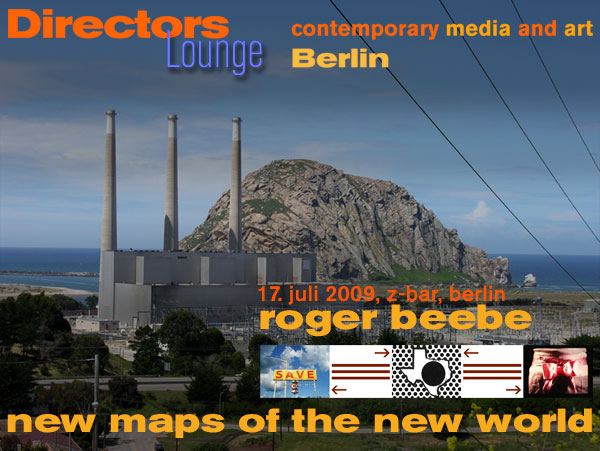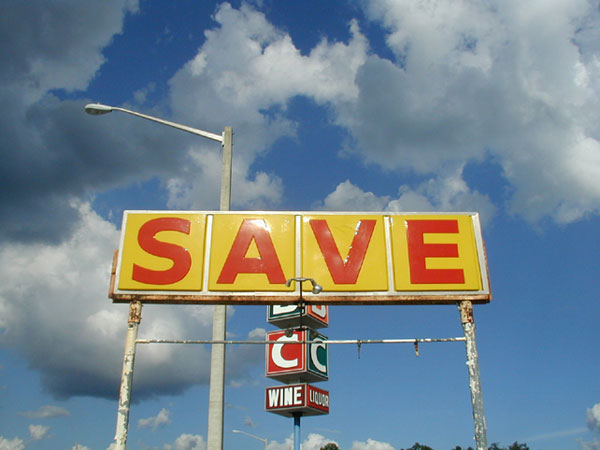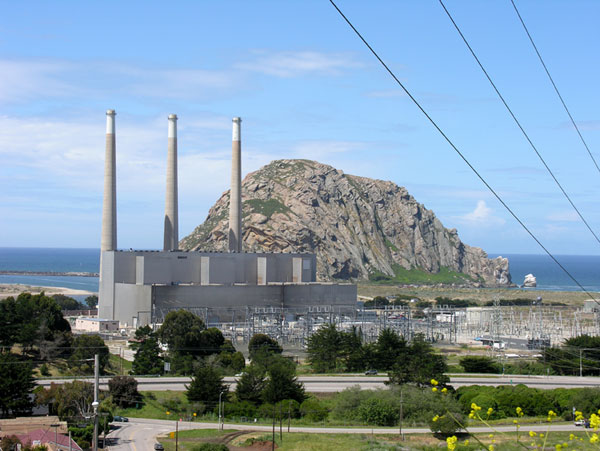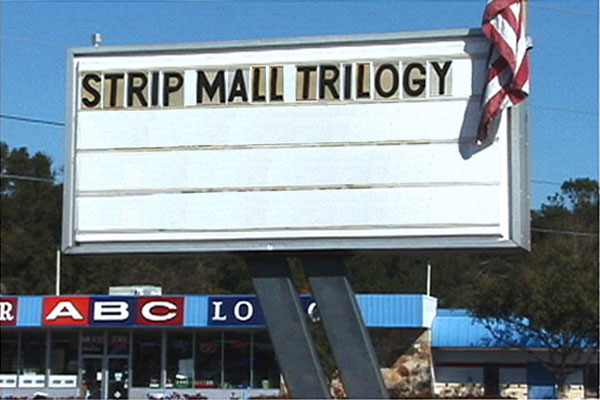this summer we present a screening series at z-bar
Roger Beebe — New Maps of the New World
film and video work
Friday, 17 July 2009
21:00 Uhr
Z-Bar
Bergstraße 2
10115 Berlin-Mitte
New Maps of the New World
Artist Roger Beebe, who also has a background in critical theory, works closely with the cinematographic image, using super-8, 16mm film and video. His visual language is largely based on the American Avant-garde, at least on that tradition that is defining film not as "moving image" but as the medium emergent from the differences between single pictures, between takes and edits and, possibly, scenes or chapters. Beauty, meaning and movement are achieved by the viewer's perception of these differences, oppositions and similarities.
 Hence, he accomplishes in his pictures intrinsic beauty and the specific intensity of its medium, small-gauge film. "The formal quality is not enough for me," he states though; and there the title of the screening programme comes into being: "New Maps of the New World". With his program, the filmmaker Beebe presents a much broader sense of "mapping" than in the geographic implications of the word: "In modernity the mapping of space, the relations between for example a worker at a steel mill and the boss exploiting his work force for his own profit were much clearer than in the globalized society today." In that sense, mapping may rather mean to follow up the layout of structures, certain relations, and an attempt to draw them out without giving ready-made conclusions.
Hence, he accomplishes in his pictures intrinsic beauty and the specific intensity of its medium, small-gauge film. "The formal quality is not enough for me," he states though; and there the title of the screening programme comes into being: "New Maps of the New World". With his program, the filmmaker Beebe presents a much broader sense of "mapping" than in the geographic implications of the word: "In modernity the mapping of space, the relations between for example a worker at a steel mill and the boss exploiting his work force for his own profit were much clearer than in the globalized society today." In that sense, mapping may rather mean to follow up the layout of structures, certain relations, and an attempt to draw them out without giving ready-made conclusions.
Such a cinematic drawing-out in Roger's terms may be the "mapping" of spatial designs of strip malls ("Strip Mall Trilogy"), which shape big parts of Americans rural and urban landscape. Or, the visual relations between a well-known land mark on the Californian Coast, Morro Bay and a nearby power plant ("rock/ hard place"), which would never be depicted in any of the tourist souvenir cards. The film is thus calling for a more inclusive perception of nature and technology. "Mapping" may furthermore stand for the ways the cinematographer on occasion constricted his camera-eye to 90° or 45° degrees (rectangle views followed by diagonal) views of his subject, as if taking the position of a draftsman of architectural spread-sheets. A structural constriction the filmmaker applied while depicting an old SAVE gas station - "SAVE" being the actual name of a former automobile gas company and the gas station an icon of American modernity. The same strategy was applied in a totally different project: the choreography of a film dance project he collaborated on with Sara L. Smith was filmed from the same alternating 90° and 45° views, thus giving the images of dance an invisible architectural grid of camera positions. ("A Woman, A Mirror")
As with "SAVE", where the visual tribute to the photography of Robert Frank in the film's last chapter adds an altogether distinct layer to his cinematography, the dance film "A Woman, A Mirror" lays out another, different kind of mapping: it is based on a research on female pilots in the U.S. Air Force in the 40's and a reflection on gendered technologies, or, technologies of gender. While the dance movements addressing the camera in female air force flight formation recall the historical fact that gender rolls were quickly re-established in the old-fashioned division of male and female labour after the war, in the fifties (and not only in the USA), the question of mapping the New World does not refer to the literal job of "Mason & Dixon" as geodesists of the young states of America, but rather, like the metaphoric image of female piloting, to the question of "where we've been, where we're headed, and what's been left behind?", as has already been stated about the film "SAVE". Looking at the whole program and at the other films, one may alter that question to: "Which New World do we come from, which new world are we headed, and, can anybody possibly try to draw a map?"
The poetic language of Roger Warren Beebe's films thus is gratifying in visual and intellectual terms, and may give inspirations to draw our own pattern maps. The artist will be available for Q&A and later social gathering at the bar of Z-Bar.
Members of the audience who are keeping an eye on the Urban Research program at Directors Lounge possibly have already seen a couple of Roger's films at the festival. And, as a curator and festival director (Flex Fest), he is very interested in the theme of urban mapping. We can possibly look forward to seeing part of that at the upcoming Directors Lounge in February 2010.
(Klaus W. Eisenlohr)
With many thanks to Sylvia Schedelbauer.
Artist's Links:
http://www.clas.ufl.edu/users/rogerbb/
Flexfest
Press Links:
Z-Bar - http://www.z-bar.de/
Directors Lounge
DIRECTOR BIO
Roger Beebe is a professor of film and media studies at the University of Florida. His work has been shown around the globe at such unlikely venues as McMurdo Station in Antarctica and the CBS Jumbotron in Times Square and at more likely ones such as the Museum of Modern Art and the Pacific Film Archive as well as at countless festivals including Ann Arbor, NY Underground, the Images Festival, EMAF (the European Media Arts Festival), and Rotterdam. From 1997-2000 he ran Flicker, a bi-monthly festival of small gauge film in Chapel Hill, NC, and he is currently artistic director of FLEX, the Florida Experimental Film/Video Festival.
Program details:
The Strip Mall Trilogy
9 min.
DV, original format: super 8
2001
TB TX DANCE
16mm
2 min. 30 sec.
2006
S A V E
directed, shot, and edited by Roger Beebe
5 min.
16mm
2006
(rock/hard place)
6 min. 15 sec.
16mm
2005
Famous Irish Americans
8 min.
digital video
2003
Composition in Red & Yellow
DV, original format: super 8
3 min.
2002
A Woman, A Mirror
choreographed by Sara L. Smith
15 min.
16mm
2001
 Back Back
|





